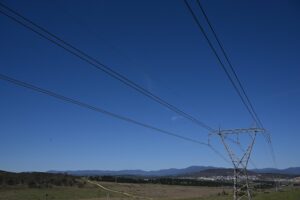
Australia’s energy debate hit heavy weather last week following the storms and blackout in South Australia.
While the physical storm has passed and the cleanup is well underway, we’re yet to emerge from the political tempest that’s followed. Many politicians and commentators have focussed on scoring cheap political points, rather than collaborating to understand what happened in order to strengthen Australia’s energy system.
A diverse group of industry and consumer bodies – the Australian Energy Council, Australian Industry Group, Business Council of Australia, Clean Energy Council, Energy Users Association, Energy Consumers Australia, Energy Networks Association and Energy Efficiency Council – issued a joint statement today that calls for Australia’s energy ministers to work together to craft a cooperative and strategic response to the transformation underway in Australia’s energy system.
Understanding the South Australian blackout is critical, but it needs to be approached in a mature, sensible way to help develop the sort of long-term approaches that will give homes and businesses the confidence to invest in energy supply, storage and end-use technologies. Short-term politicking will distort or defer essential investments, raising the costs of energy.
While we have a long way to go to fully analyse both the blackout and its implications, there are a few key points that can be raised already that have larger implications.
The AEMO Preliminary Report on the blackout sets out that on 28 September a massive storm whipped through South Australia. The storm damaged 22 transmission towers, and three lines north of Adelaide went down within 12 seconds. Following this, 315 MW of wind generation disconnected, around 36 per cent of the 883 MW supplied by wind just before the event.
This increased the draw on the Heyward interconnector to over 850 MW, which exceeded safety levels and resulted in the automatic tripping of the interconnector. As a result the remaining generators in the state shut down, resulting in a System Black.
The process for restoring power started rapidly, and by midnight that day 80-90% of electricity supply was restored to the part of the SA grid that was still safely connected to the southern part of the grid. Other areas were progressively connected as lines were restored and/or deemed safe.
This was an extreme event, and it’s not clear if any grid would withstand the loss of three transmission lines in such a short period of time. However, there are some salient messages for grid stability under less extreme scenarios, including both supply-side and demand-side issues.
Firstly, its critical to bear in mind that designing a grid to survive any conditions would be prohibitively expensive. Despite a major storm, supply was rapidly restored to most of South Australia. Rather than trying to keep an entire grid functional at all times, essential services (e.g. hospitals) should have emergency backups that can withstand these kinds of shocks.
Secondly, the impact of the loss of the interconnector highlights issues around diversity and risk. Increased diversity of energy services, including supply, storage and demand-management, improves system security if it is integrated properly. Following Hurricane Sandy in the US, hospitals and campuses with cogeneration systems and microgrids were among the few locations with power.
With regards to risk, buried in the AEMO report is the statement “There was no local SA Regulation FCAS [Frequency Control Ancilliary Service] requirement pre-event, as there was no credible risk of separation of SA from the National Electricity Market (NEM).” In the common (rather than technical) sense of the term, it’s clear that disconnection from the NEM was a ‘credible risk’. This was an extreme event, and it’s not clear that local FCAS could have helped to keep the grid stable. However, it raises the broader point that we need to review how we assess risks.
Third, building on the point around FCAS. The energy market needs more effective mechanisms for tapping into demand-side services to manage fluctuations in both supply and demand, including both FCAS and demand-response over longer periods. This is especially true as the level of intermitted supply from wind and solar increases in the grid.
This highlights a more strategic point. The Energy Efficiency Council focuses on demand-side issues, and is neutral with regards to generation technologies. However, it’s clear that consumers will continue to install PV and that investment in large-scale renewables will continue. The debate needs to shift to how we can accommodate this transition at lowest cost while continuing to supply consumers with secure energy services.
Demand-response (the ability for larger energy users to voluntarily reduce demand in a coordinated way to maintain an efficient balance between supply and demand across the electricity system) will be a critical part of this transition for both affordability and security. Energy efficiency will reduce the amount of expenditure required in new forms of generation.
We believe state and federal governments need to work together to proactively manage the transition to new technologies for generation, supply, storage, and energy use that is currently underway.
Creating a 21st century energy system that is both reliable and cost effective will require sustained political leadership that overcomes the inertia in our energy market institutions and regulations. How we do that is a hard, long conversation. Its also a debate worth having.
Rob Murray-Leach is the Head of Policy at the Energy Efficiency Council.
The joint statement – Energy Challenges Need Cooperation – can be found at www.eec.org.au








